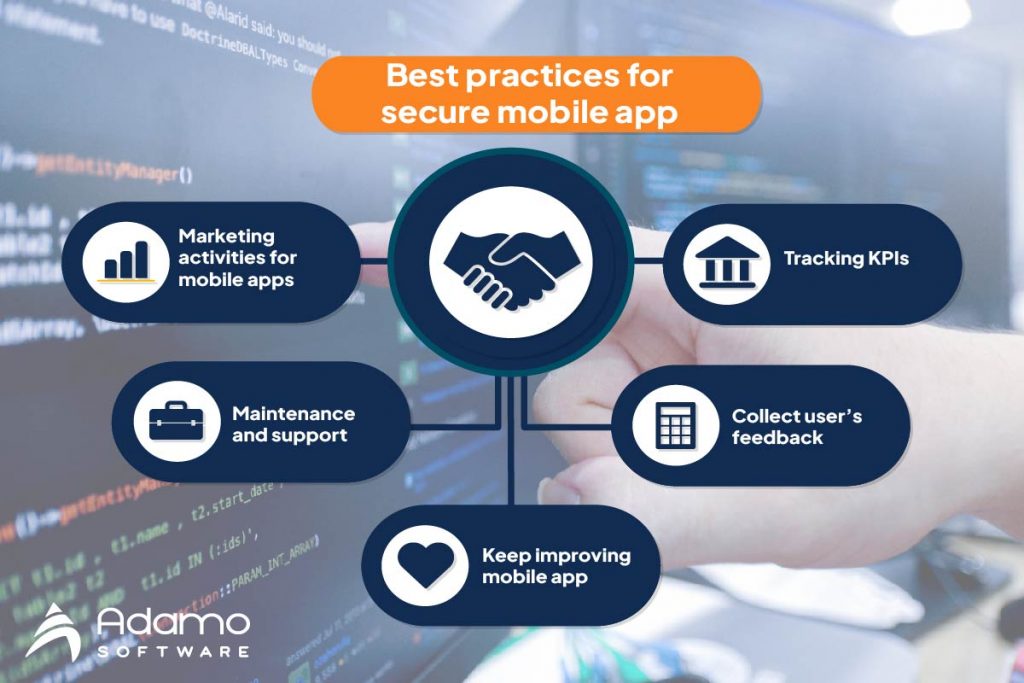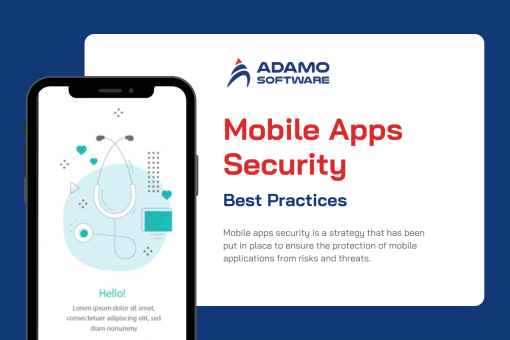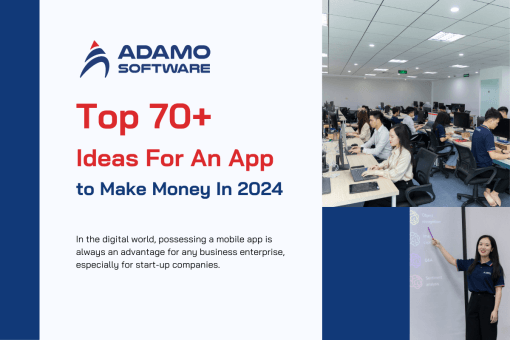Building a Mobile App – 15 steps to build mobile apps (Update 2023)

With the proper design strategy and knowledge of the latest trends, businesses can create highly successful, aesthetically pleasing, and user-friendly apps.
Every day, more applications are introduced to the market. Additionally, there are currently more mobile devices than people around the globe. No doubt mobile applications are anticipated to generate $233 billion in revenue by 2026. However, it is not as simple as it may appear when building a mobile app. Software is abundant, but user attention is scarce.
To distinguish themselves from the competition, businesses must construct products that are well-suited to market requirements. To assist enterprises and organizations in achieving this goal, this guide provides advice on how to build a mobile app. This article is useful for entrepreneurs, administrators, and decision-makers who wish to transform their product vision into a successful mobile app.
I. A project management tool: Solutions for secure mobile app development
You’ve undoubtedly heard the comparison between app development and home construction. There are numerous minor tasks to manage to complete the entire building a mobile app process.
However, overlooking or forgetting even a single minor duty can harm the app’s functionality and project completion.
Here, a project management tool can come in handy when building a mobile app. They offer numerous advantages to developers, including:
Categorizing complex tasks: Most mobile app development projects require detailed planning to classify complex duties. However, this can be a lengthy and complicated process. Using software for project management can make all the difference. Typically, these tools have columns for various projects where developers can construct various tasks that can include features, priorities, levels of complexity, and more.
Establishing improved team collaboration: Project management tools enable developers to communicate with their colleagues clearly and concisely. They allow for a coordinated workflow in which developers can share files, store documents, designate tasks, and even chat in one location. Having all project-related information in one location allows developers to remain informed and maintain their focus.
Tracking time: Time tracking is essential for developers who are paid by the hour and must provide their clients with information on how they spent each hour working on their project. Using project management tools, developers can easily generate daily, weekly, and monthly reports as time logs are stored automatically.
II. Best practices for secure mobile application development

1. Marketing activities for your apps
Your application is a business; handle it as such. Would you introduce a new product or service without promotion? Clearly not.
You could have the greatest app on the planet, but if nobody knows about it, your efforts will be in vain. Your app must be effectively marketed to attract users’ attention and stimulate their interest.
Begin by driving traffic to your website and application. Visitors activate the application. App installations convert to paid memberships.
Ensure that you have a digital presence on the maximum number of marketing platforms. Concentrate your efforts on the channels where your user base spends the most time. Utilize social media channels such as Facebook, Instagram, Twitter, and LinkedIn to promote your application. You can also advertise the app on Snapchat and TikTok if you’re targeting a younger demographic.
Develop promotional videos and app demonstrations. Transmit the videos to YouTube. These recordings can always be repurposed for other distribution channels.
The objective of your marketing strategy when building a mobile app must be to acquire new users. Use a combination of both inbound and outbound marketing strategies to expand your reach.
Your strategies for promoting your mobile application will likely evolve over time.
In addition to conventional marketing, you must also prioritize ASO or app store optimization. This helps ensure that your app is highly visible in app stores.
2. Tracking KPIs
Is your app successful? Establishing and monitoring KPIs (key performance indicators) is the only method to answer this question.
Your app analytics and KPIs must go beyond app performance metrics such as speed and uptime,although both are beneficial in terms of performance and reliability.
Monitor and evaluate KPIs based on how users are adopting your application.
Are people downloading the application? How many? Are consumers retaining the application or removing it? How frequently do users utilize the app?
You must have a system that allows you to view the metrics for new users, returning users, time spent in the app and the location where the majority of time is spent. Without these analytics, it is impossible to determine the viability of your application. You cannot operate a successful business on conjecture; you must have data to support your theories.
Tracking key performance indicators (KPIs) in your App Store Connect account can reveal which aspects of your app are producing the best results and which need refinement.
Suppose, for instance, that the substantial majority of your app’s users are utilizing a feature that you did not initially deem essential. You can use this data to determine whether or not to make this feature more accessible on all screens. Add it to the homepage or raise its position in the side menu when building a mobile app.
3. Collect users’ feedback
Before your first launch, you most likely conducted research or consulted with colleagues. The majority of this, however, was based on your own intuition.
However, once the app has been deployed for the first time, it will be utilized by actual consumers. Request their opinions on the matter. No matter how much you dislike hearing this, in the end, your opinion is irrelevant; it’s all about your consumers and users.
Customers appreciate being inquired about their opinions. People who do not wish to weigh in will disregard your request. They will simply ignore you. It’s not as if they will be offended.
Participating users will become invested in the success of your app and provide you with genuine feedback.
You must bear in mind which feedback relates to the fear of change and which feedback relates to the fear of cost increase. However, you can ask your customers questions in a manner that allows them to be candid. The user responses will help you prioritize the next features to develop when building a mobile app.
Perhaps you had an essential task in mind and intended to complete it as soon as you had the opportunity. However, if your consumers do not agree, you should save your money. Spend that money on what they request in order to retain them as customers of your software. Ultimately, this will prohibit them from churning.
4. Keep improving the mobile app
When returning to the app to make improvements, you should adhere to the same procedures you used during development. Before releasing an application to the public, it should always undergo quality assurance.
Never undervalue the significance of releasing new versions of your application when building a mobile app. Users are providing feedback, and they anticipate modifications. Failure to enhance your app may result in users abandoning it entirely.
5. Maintenance and support
Your application will always require ongoing maintenance. It is essential, therefore, that you retain your development team.
In addition to your app releasing new versions, mobile device operating systems also release new versions. You must ensure that your app is compatible with the most recent Apple and Android software versions.
Likewise, compliance levels and regulations are subject to change. For instance, you must ensure that your application complies with data regulations such as GDPR in Europe and CCPA in California. If you process credit card payments, you must comply with PCI standards. The app must be HIPAA-compliant if it will handle medical information. The list is exhaustive.
All of these conditions require ongoing upkeep. You should eventually plan for customer support as your app scales. What occurs if an app user has a query or requires assistance? Initially, you can undoubtedly handle this by yourself. However, at scale, it is likely impossible to manage hundreds or thousands of potential messages.
You may also need to employ a sales team. All of this falls under the category of “support” following the launch.
These are elements of building a mobile app that will always be present. Consequently, you must plan and budget accordingly.
6. How to make money with a mobile app?
There are numerous methods to generate revenue after building a mobile app. Initially, you can use a mobile app to increase your business’s revenue. Sales through mobile commerce, customer loyalty programs, and referral programs are all excellent ways to earn money.
You can also monetize your app by charging users a one-time fee to acquire it. App purchases for items such as coins and content upgrades are common methods to generate revenue. Alternatively, charging app users a monthly or annual subscription fee is an excellent method to generate recurring revenue.
Additionally, you can monetize your app by selling advertising space. Similar to placing advertisements on your website.
In some instances, certain types of apps may not necessarily generate revenue, but they can help you save money. Internal business applications are a prime example. Building a mobile app projects for remote employees, field service workers, human resources, or internal employee communication can save your business tens of thousands of dollars annually in productivity costs.

III. How to build a mobile app in 15 steps from scratch
#1: Define a mobile app goal
#2: Do market research
#3: Identify users’ problem
#4: Decide mobile app’s features
#5: Design mockups for mobile apps/wireframe
#6: Choose an appropriate development method
#7: Create graphic designs (UI/UX) for apps
#8: Set technical requirements
#9: Define measurable milestones
#10: Create an MVP
#11: Test mobile apps on iOS and Android devices
#12: Deploy
#13: Submit apps to the app store
#14: Market apps for the best exposure
#15: Improve and update your app continuously
1. Define a mobile app goal
Before engaging in a detailed discussion about the costs, functionality, and technology architecture, it is essential to define the business objective. All subsequent steps depend on the selected objective:
- The budget for attaining this objective
- The selection of features for the first version of the app
- The cost and schedule for building a mobile app
Determine first what the app should accomplish and by when. How much will you earn? How will customer recognition or loyalty increase? And how will you quantify the goal’s accomplishment?
The second issue is, how much are you willing to invest? If the objective serves to determine which features and technologies will be used in the app, then the budget dictates what to eliminate.
2. Do market research
It is essential to comprehend the app’s intended audience, the most important features, how competing apps function, and the processes to build a mobile app that should be automated. It may be necessary to conduct a survey or hire a marketing consultant. Without this, however, there is a danger of building a mobile app with dozens of superfluous features.
Additionally, you must determine whether the application is B2B or B2C. There are mobile apps for customers, with which they can purchase products, and older services, and access their accounts. Some applications and tools allow employees to automate business processes in a company or to resolve issues remotely.
You must also identify potential influencers and brand ambassadors at this juncture. Create an inventory of all influential individuals who may be interested in reviewing your app. Before sending them a proposal, connect with them on social media and initiate a conversation to foster a relationship. These individuals will assist you in promoting your product after its release.
3. Identify users’ problem
Typically, mobile apps are born gradually – first, a demo version with simplified functionality is published (soft launch), followed by the release of new features in subsequent releases. In the best-case scenario, the developers can even generate a minimum profit after collecting user feedback and determining where to direct future development efforts.
From a marketing perspective, it is essential to outline the fundamental distribution model here, as the app’s primary pages depend on it.
4. Decide the mobile app’s features
You’re probably given your product concept some thought. You’ve already imagined all the marvelous things it can do; its features may serve to boost its profile. It appears that social sharing, notifications, payments, and integrations are all indispensable.
They may be all beneficial features, but it may be best to ignore them for the time being. Each of these could impede the growth of your primary feature. If you prioritize the incorrect phase of building a mobile app process, you risk losing either time or quality.
You may even neglect the essence of your product concept. Consider again the ultimate purpose of your application. Reduce it to a single sentence. Then, concentrate on it. The remainder will ensue.
A large number of features may seem like a good concept, but this is typically not the case. It only works for consulting firms that wish to increase the contract’s value. Users require the simplest solution to their concerns.
Once you’ve determined the primary function of your app, strive to highlight it in the most prominent manner possible. Each additional option, personalization, and integration makes it harder for users to comprehend the value you intend to provide. These bells and sirens incur additional expenses.
Not only is the development of more complex products more costly, but you will also need to devote more time and money to early customer support. Fewer is better. This is a crucial requirement in the earliest phases of product development.
5. Design mockups for mobile apps/wireframe
A wireframe is an outline of your mobile application. It does not need to be too formal, and you do not need to stress about the graphical design of your app just yet. You can construct a wireframe on paper, a whiteboard, or a napkin, or you can utilize a digital wireframing tool.
The wireframe’s purpose is to simply illustrate the app’s features and set out the schemes.
Concern yourself not with the app design elements in the wireframe. This utility is not intended to be an exact representation of how the final application will appear. Instead, your wireframe should emphasize structure and fluidity.
Create a user journey map when building a mobile app. Demonstrate what occurs when a user clicks a specific button. What does the following page appear like? What occurs when a use selects Option A vs Option B? Wireframes aid in aligning your team with your vision for how the app will function and operate.
6. Choose an appropriate development method
How to build a mobile app has an equal impact on its success as its functionality. To create a successful application, you must select the appropriate development methods. There are three primary options from which to choose.
a. Option 1: Platform-specific native app
Native applications are designed specifically for iOS or Android. The language used to create these applications is only compatible with the operating systems of these platforms. A native app can make extensive use of your device’s hardware and functionality, which enhances the user experience.
b. Option 2: Cross-platform app
Cross-platform development is the process of building a mobile app that can run on multiple platforms, such as iOS and Android, using a single codebase. To code them, development teams must employ cross-platform development kits (SDKs) such as React Native and Flutter.
Even though you lose some native advantages, this is still the most cost-effective approach if you’re on a tight budget but still want an app that is designed, optimized, and stylized for multiple platforms.
c. Option 3: Build with Kotlin Multiplatform Mobile (KMM)
Kotlin Multiplatform Mobile (KMM) is a software development kit (SDK) that makes building a mobile app easier by letting teams write the same business code for both iOS and Android. This is useful whether you’re building a native app or a cross-platform app.
According to our experience, Android and iOS apps developed with KMM can share up to 70% of their Kotlin code. This reduces the required development effort, which can accelerate delivery and reduce project costs.
White Kotlin Multiplatform does not support the sharing of UI logic between iOS and Android app development, it enables developers to maximize the native UI/UX capabilities of either platform. As a result of separately coding the UI for each platform, the interface and user experience will feel native.
Similarly, it enables mobile applications to optimize the use of the device’s hardware features, such as the camera, GPS, Bluetooth, and motion detection, among others. Kotlin Multiplatform Mobile can be an optimal solution for applications that significantly rely on these hardware features, such as augmented reality (AR) and Internet of Things (IoT) apps.
Moreover, it enables code sharing to be optional. This means that you can choose to have a shared codebase for only the desired features or modules. In fact, you can use KMM even if you only intend to be present on one platform (such as Android), regardless of whether you plan to build a mobile app on another platform (such as iOS) in the future.
KMM is not a direct substitute for Flutter or React Native. Rather, it facilitates a native development strategy by eliminating the need to duplicate code across multiple platforms. It provides the advantages of both native and cross-platform development strategies.
7. Create graphic designs (UI/UX) for apps
A great deal of attention must be given to an app’s design for users to have the best experience possible. If it turns out to be sloppy or flawed, users will promptly abandon your product in favor of a competitor’s. Therefore, this phase requires significant effort if you wish to build a mobile app that users adore.
Therefore, your UI/UX design must be intuitive, user-friendly, engaging, and seamless. Let’s keep this in mind as we examine each of the design areas in greater detail.
8. Set technical requirements
Utilize the wireframes you created during the pre-development phase to set technical requirements.
There are the unseen inner workings behind the scenes of your app. Sometimes it makes sense to alter things logistically because it will save you a great deal of time and money.
A developer must examine your wireframe and evaluate the technical obstacle when building a mobile app, not just the visual ones.
Your technology specification may uncover alternative means to attain your objectives. Identifying these alternatives now can save you months of labor and thousands of dollars.
At the very least, acquire the information, and then you can evaluate your options. You can always argue that the user experience is more important than reducing costs and increasing construction efficiency. However, the tech requirements procedure remains an integral part of development.
9. Define measurable milestones
Setting milestones will help you and your team stay on track when building a mobile app. Without benchmarks, it will be impossible to measure your progress.
The objective here is to divide your massive development undertaking into smaller portions. It is much simpler to work on several smaller projects than to tackle a large undertaking from start to finish.
This is one of the pillars of the agile framework, a prevalent method for building a mobile app. Each small app development assignment must be completed within a given timeframe. This could range from a few days to several weeks, depending on the difficulty of the assignment.
This timeline of milestones can be used to track your progress and ensure that you and your development team are meeting deadlines.
10. Create an MVP
As you begin to build a mobile app, you should always be developing a minimum viable product (MVP). The concept behind an MVP is that it compels you to consider your app’s most important features. This is a crucial aspect of the app development endeavor for building a mobile app successfully.
What is required for your app to function? Construct those features first, then worry about the rest.
The possibilities for building a mobile app are practically limitless. During the construction process, it is simple to become sidetracked and lose sight of your objectives. It’s easy to say “Let’s add this feature” or “Wouldn’t it be cool if the app could do this?” a month or two into a project.
These ideas will add time and expense to your project. They can even detract from the app’s primary functionality.
You could always introduce features in the future. In fact, we’ll address this momentarily in the guide, during the app development’s later stages.
An MVP is the skeleton of your application. Determine how to build a mobile app with only the required components. It has just enough fundamental features to fulfill the most basic functionalities and use cases. Don’t fret about an attractive appearance or distracting features. That is irrelevant right now.
11. Test mobile apps on iOS and Android devices
Once your MVP is complete and your app is functional, you must test it before deployment.
The application must be evaluated on real mobile platforms when building a mobile app. Your application can be utilized in various methods, so the individual in charge of quality assurance will have to test it on all of them.
You have your task cut out for you between iPhones, iPads, Android devices, PWA, smartphones, tablets, and more. Ensure that the app functions online, offline, etc. Devices with various software versions or screen sizes may experience unique problems.
Don’t assume that the application is working accurately after a single test on your phone. As a novice app developer, you may query the QA procedure. Should you pay someone to evaluate your app? Shouldn’t an app developer be able to produce code that is free of bugs?
In a perfect world, apps would be created flawlessly and not require testing. However, in the real world, developers are notoriously bad at finding their errors.
Don’t, therefore, undermine the QA process. Before your app is released to the public, a quality assurance specialist can inspect it for flaws. It is preferable to identify these now. Otherwise, users will encounter them in the real world.
12. Deploy
Before submitting your app to the app stores, you should deploy its pre-final version available to a select group of beta testers. You can either share this version with testers or use tools designed specifically for beta testing of new apps in the app stores.
13. Submit apps to the app store
To distribute your app, you must submit it to the various app stores. There are different requirements for apps in the Google Play Store and the Apple App Store. Therefore, you must be familiar with all of the submission guidelines before proceeding with this procedure.
a. How to launch an Android app on the Google Play Store
1. Create a developer account in the Google Play Console and a Google Account with your company’s name.
2. Pay for the account with a credit card, then finalize the registration by entering the developer’s information.
3. Provide details regarding the app’s content and distribution.
4. Text and visual marketing materials should be uploaded.
5. Transfer the build to the Google Play Console.
6. Define the policy on privacy.
7. Configure for sale content, including subscriptions and in-app purchases.
8. Deliver the build to Google Play
b. How to launch an iOS app on the App Store
1. Create an account for developers. An annual Apple developer account costs $99. When you have one, you can administer your apps with App Store Connect.
2. Complete the app. Test it on as many iOS devices as possible for memory leaks, performance problems, and crashes.
3. Meet the requirements. Before submitting the application to the App Store, you must acquire a distribution certificate, a review provision profile, and an app ID.
4. Configure the App in App Store Connect by filling out the relevant fields: icons, screenshots, app name, category, description, keyword, etc. After selecting all of the checkboxes and making the necessary changes, you can submit your application for moderation.
5. Wait. In the interim, the app will have the “awaiting verification” status while the Apple Review Team conducts its review. After a few days, you will receive a message containing the review’s results.
14. Market apps for the best exposure
In addition to executing your marketing plan when building a mobile app, the following app marketing strategies are highly effective.
1. Get featured by Apple in the App Store: If you do this, you’ll gain big. Although there is no foolproof method, there are steps you can take to increase your chances!
2. Employ a paid-to-free strategy: If your app is a paid one, offering it for free for a limited time and promoting it during that time can generate avalanches of downloads. This case study demonstrates how one of these initiatives generated 100,000 downloads!
3. Improve your app store optimization (ASO) game: ASO does not cease when the app is released! You can still influence the App Store discovery of your app by modifying its metadata. This 5x app store optimization strategy will provide you with the finest advice on how to do so.
4. Influencer marketing: This is unexpectedly an excellent app strategy! Find influencers whose audiences match your app’s target demographic and request that they promote or mention your app. They’ll provide you with a price quote, and you can proceed from there.
15. Improve and update your app continuously
Appropriate app development and marketing are two components of a three-part matrix when building a mobile app. The final component of the matrix is maintaining and improving the application after its release. You presumably want your app to remain on the market if you’re building a mobile app, yes? Therefore, do not neglect to introduce continuous improvements. Focus on the overall quality, functionality, and security.
In addition to fixing bugs and resolving technical issues, you should develop new pertinent features and keep your app current. Review the complexity of the user acquisition procedure (onboarding, registration forms, etc.) regularly. There are always emerging new technologies and methods that make user registration more convenient. Users must see that your concern for their experience is ongoing.
In addition, keep in mind that Apple and Google regularly update their operating systems. Maintaining app compatibility with recent OS modifications is crucial when building a mobile app. Occasionally, it may necessitate pivoting certain features or modifying app assumptions.
Also read: Best way to build cross-platform mobile apps in 2023
IV. FAQs for securing mobile application development
1. How much does it cost to make an app?
The average cost of building a mobile app ranges between $10,000 and $150,000. Complex apps can cost $300,000 or more, whereas simple apps typically cost around $50,000.
The cost of building a mobile app depends on a number of factors. The type of app you’re developing, the features you’re implementing, and the manner of development will have the greatest impact on cost.
A platform for building a mobile app is less expensive than low-level coding. As you continue to add features, functionality, and complexity to the application, the price will increase.
It all begins with your app concept. The complexity of your application will have the greatest effect on the price.
For instance, building a mobile app that employs real-time GPS tracking and real-time user communication would be more expensive than a simple content app. A mobile app that only provides access to a mobile ebook or flashcards would be less expensive than one that includes personalized user profiles.
This is why. Apps with all of these additional features necessitate more work during development and on the back end, which increases the cost. Suppose you want app users to register into a unique profile each time they launch the application. This necessitates database and authentication servers. You’ll also need comprehensive security features to safeguard the information of all users. This information is unnecessary for calculators and illumination apps.
If you want to create the next Facebook, Uber, or Tinder, it will be much more expensive than if you want to create a straightforward app for your small business.
2. How long does it take to build a mobile app?
The time required to build a mobile app depends on various factors. The type of application you’re developing, the complexity of its features, and the manner of development are the three most important factors when estimating your timeline.
Some applications can be developed in a matter of months, while others can take years. In general, most mobile applications can be developed within six to twelve months.
Building a mobile app with sophisticated functionality will take longer to develop. The entire process of developing a straightforward app for personal use, such as a flashlight or calculator, could be completed in less than a week. Expect it to take years to create the next Facebook, Uber, or Tinder, however.
Building a native app with low-level coding would take longer than utilizing an app development platform.
3. Which one is better: building iOS apps or Android apps?
It is recommended to build a mobile app for both platforms. If you build a mobile app for one platform but not the other, you are ignoring a substantial portion of the population.
This choice is only necessary if you are developing a native app from the start. In this case, you will require two distinct versions: one for iOS and one for Android. It’s essentially the same as creating two distinct apps.
4. How do you start with mobile app ideas?
Before beginning, you must ensure you have a viable app concept. Considering the millions of apps available on the market, this phase may seem intimidating. However, the idea need not be completely original. Numerous excellent applications are variations on extant concepts.
Perhaps you have a concept for the next Yelp for B2B products or Uber for pets. Regardless of the concept, you must ensure that no one is already pursuing your objective. If so, you must devise differentiators that distinguish your idea from the competition.
It is also important to note that not all ideas must be inventions or novel concepts. Numerous applications are merely extensions of existing businesses. If you have an e-commerce website, you can build a mobile app that enhances the mobile shopping experience for your consumers. If you own a barbershop or nail salon, you can build a mobile app that improves customer bookings, appointment administration, and deposits.
5. Hiring an app development company or using an in-house team?
Hiring an agency to build a mobile app has both pros and cons. Fortunately, we have already discussed whether businesses should employ an app development company or build their own in-house team. Here you can discover additional information.
6. What is the best way to develop an app?
There is no singular method of building a mobile app that is optimal for everyone. It depends on various factors, including your requirements, budget, app type, and industry.
If you are developing a gaming application or something similar, native development is your best option. If you’re building a mobile app as a diversion or for personal use, you can likely get away with a templated design.
7. How to create an app for free
Investment is typically required for building a mobile app. This is particularly true if your app addresses a significant market need.
You can build a mobile app for free with BuildFire’s app builder platform if you’re just getting started. This software allows you to create your own applications without writing a single line of code. This is ideal for those who do not wish to acquire a new programming language but still wish to experiment with the custom editor.
8. Can we make any changes to a mobile app after launching?
The short answer is Yes. After launch, there remains a substantial amount of labor. When building a mobile app, no app is flawless. Even the most popular applications on the planet are continually receiving updates. The release of new versions of your application should be founded on user feedback.
Regression testing is something else that must be considered when updating an application.
Subsequent deployments of new features or updates could introduce previously unknown issues. In brief, something that worked with your previous release does not no longer function as a result of the update.
Therefore, whenever even minor modifications are made to your application, you must repeat the QA process. This is the only method to ensure that regression has not occurred and introduced a new failure point in the application.
V. Adamo Software – Leading Custom Mobile App Development Companies in Vietnam
In short, there are lots of steps to consider when building a mobile app from scratch (up-to-date 2023), creating a MVP to testing and maintaining the software applications.
As a leading mobile app development company in Vietnam, Adamo Software has experience in building mobile apps in various industries. If you are looking for a mobile app development company that can help transform your business ideas, do not hesitate to contact us for more information.











